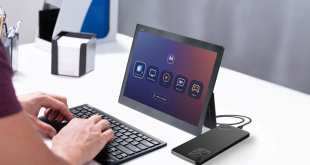Yesterday, it was announced that a team headed up by ex-Microsoft and Nokia employees is looking to shape up the VR space with its new company called Varjo. Their main aim: eliminating the ‘screen door effect’
One of the biggest problems that has plauged virtual reality headsets has been displays with poor resolutions, leading to what has come to be known as the screen door effect – where it seems like everything you’re looking at is through a mesh screeen door.
The way the company is looking to solve this problem is, unsurprisingly, by creating a high-end headset that’s capable of both virtual and augmented reality. What sets Varjo apart from the Samsungs and Oculus-es of the world is that the company will employ what it refers to as ‘human eye resolution’ which promises 70 times the clarity of current VR headsets.
A cityscape on Varjo (above) vs a traditional VR headset (below)
Now, that’s not to say that the Varjo headset will have a resolution that’s 70 times higher than the HTC Vive or Oculus Rift. The new hedset will use some clever tech to offer resolution in the centre of the screen that will hide individual pixels while simultaneously aping how human vision works. That means you won’t be looking down a long corridor at a screen, and instead the main displays will be surrounded by lower-resolution displays at the edge of your field of view. Basically, how things outside of your vision are out of focus in the real world are naturally filtered out. The company also says that its headset will use eye tracking and other software to render where you’re looking inside a virtual screen and focus the resolution there to give the illusion of an ultra-high resolution display.
This isn’t the first time we’ve seen this kind of focused rendering in VR, but this is much more specific and some may be skeptical that this tech will be able to fit inside of a wired headset, even though company CEO Urho Konttori (who had a vital role in the launch of flagship products like the Nokia N9) has said that the product is being aimed at the highest end of the market.
The company also wants to tackle augmented reality (AR) at ‘human eye resolution’, but in a different way of to the transparent displays of Google Glass and Microsoft’s HoloLens. Instead, the headset will have high quality cameras mounted on it.
Varjo plans on launching the as-of-yet untitled headset to industry partners for free later this year with a full consumer launch in 2018. Don’t expect this to make a big impact in the mainstream though with a price tag likely to be in the thousands.
 PCR Tech and IT retail, distribution and vendor news
PCR Tech and IT retail, distribution and vendor news



